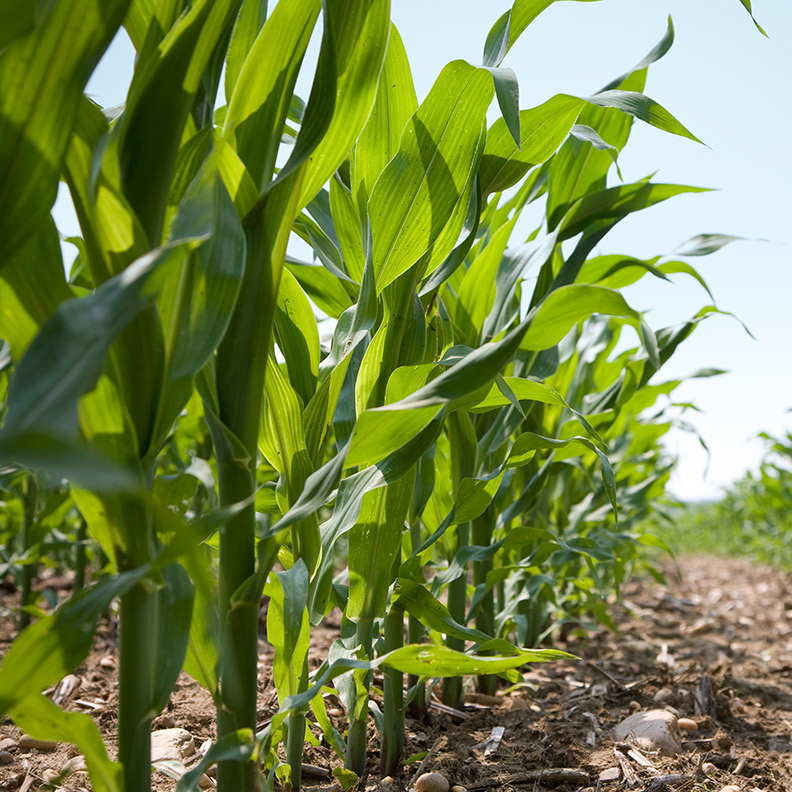Farmers were able to plant the 2021 crop with little to no issues throughout late spring. Although the western Corn Belt was dry, enough rain fell to allow for a successful planting season. Cool weather following emergence left corn and soybeans slightly behind average growth stages. The major factor driving supply concerns is the summer weather in the U.S. Nearly every storm system, or lack thereof, is triggering high volatility in commodity markets.
U.S. row crop
Corn around the U.S. is starting to silk with 4% silking as of June 27; mostly in the southern U.S., according to USDA. 64% of the corn crop is rated as good or excellent compared to 73% in 2020. Only 40% of the North Dakota corn crop is rated as good or excellent due to drought conditions. U.S. soybeans are also in worse condition with 60% rated good or excellent compared to 71% in 2020. What started off as a demand-driven bull market is now being fueled by supply concerns out of the U.S. due to drought conditions on the west side of the Corn Belt. December corn increased 4.4%, November soybeans increased 4.5%, December Chicago wheat decreased 6.5%, and August live cattle increased 3.5% through May and June. Class III milk fell 13.0% from May 1 to June 30, primarily due to increased production. Milk production was estimated 4.6% higher in May year-over-year, according to USDA. 2021 provided ample opportunity for growers to capture strong margins compared to previous years, but 2022 is opaque. Seed costs are estimated to increase, according to a report form University of Illinois and Ohio State. For every $100 increase in gross revenue, farmers can expect about a $7 increase in corn seed, according to the report. Farm inputs typically trend in the direction of ag commodity prices. It will be important to monitor and manage for major input prices including fertilizer, chemicals, seed, and rent.
Ground-level insights from ag bankers
Grant Wentz, Northcentral ND – We were dry going into last fall and had a mild, relatively open winter. We needed moisture in spring had one previous rain of about an inch in March before it rained again in late May, when we received about another inch. With the drier spring, planting went very well. Many farmers who carried over inventory from the previous year, especially wheat, have been able to capture high cash prices. The top concern is lack of moisture throughout the summer months. We had several ranchers purchasing hay as far back as December 2020, due to the dry conditions, but even they likely will not have enough to maintain their entire herds. Crop farmers haven’t been able to forward sell very much due to the risk of yield loss from the drought.
Global ag
In fall 2020, Brazil was struck with abnormally wet soil conditions that delayed the first crop soybean planting. The fall delay led to a delayed harvest and another delay in second crop corn planting. The current second crop corn is now well behind historical maturity, at risk of cold conditions and a missed rainy season. In late June, a frost occurred throughout southern Brazil that may hurt yields. In Parana, the second largest corn producing state, the state agriculture and livestock department reported than 75% of corn acres will see significant yield losses. China was an opportunistic buyer of soybeans in June buying 480,000 metric tons of soybeans, the largest purchase in the last four months, after soybean prices had briefly retreated to three-month lows. China’s hog herd is the largest in the world, which demands such feedstocks.
What to watch for
U.S. weather will be the dominant factor throughout July and August for U.S. ag commodity prices. Mid to late July is the critical time when corn is most vulnerable to yield loss during pollination if the weather causes stress to the plant and the markets will reflect it. The bull market started on strong global demand and farmers should be opportunistic buyers and sellers throughout market volatility in summer.

